As the disease progresses, harmful proteins, mainly beta-amyloid and tau protein, build up in the brain. These proteins lead to the death of nerve cells. As nerve cells die, the amount of important chemicals they produce decreases, which is necessary for the brain to function properly.

Causes
The causes of Alzheimer’s Disease are believed to be the abnormal accumulation of amyloid beta protein deposits in and around nerve cells and tau protein tangles, which occur almost exclusively in these cells.
Risk Factors
Risk factors include:
- Age (because it is mainly the elderly who fall ill)
- Gender (women are most at risk of falling ill)
- Hereditary conditions (confirmed cases of the disease in the family)
- Genetic predispositions (because of gene mutations)
- Serious head injury in the past
- Diabetes
From the point of view of prevention, modifiable factors that increase the risk of Alzheimer’s disease are also important, including:
- Smoking
- Incorrect diet
- Incorrect BMI
- Arterial hypertension
- High level of LDL cholesterol in the blood serum
- Low physical and mental activity
- Poor sleep
- Chronic stress
Symptoms
The initial symptoms of Alzheimer’s disease are often underestimated, and a late diagnosis can increase the risk of depression for both the patient and their loved ones due to a lack of awareness about the disease’s progression. Early-stage symptoms typically include, e.g., subtle memory problems and difficulties recalling specific words. As the condition advances, patients may experience impaired thinking and judgment, challenges in speaking, and trouble constructing sentences or selecting appropriate words. In the later stages, the disease progresses further, leading to additional complications that can destabilize the lives of both the patient and their family.
Other common symptoms include:
- Difficulty with spatial orientation (e.g., difficulty finding your way home)
- Loss of sense of time and difficulty recognizing the time of day
- Visual disturbances (e.g,. difficulty reading, distinguishing colors, recognizing people)
- Loss of problem-solving skills
- Being lost and disoriented
- Forgetting about personal hygiene
- Not paying attention to appearance
- Eating disorders (very often forgetting to drink or eat)
- Difficulty performing ordinary, everyday activities (e.g., difficulty getting dressed, washing, driving, preparing meals)
- Lack of interest in previous hobbies
- Repeating the same questions over and over
- Inability to hold a conversation
- Constantly losing things and having trouble finding them
- Mood disorders (being lost, scared, anxious, sad)
- Personality changes (a previously gentle person may become irritable, suspicious, and aggressive)
- Inability to properly assess the situation and yielding to third parties (e.g. signing contracts offered by dishonest sellers)
- Emotional and social disorders (causing withdrawal from social and community life)
Visit To The Doctor
Contact your family doctor if you notice:
- Memory disorders
- Tendency to changeable moods
- Getting lost in previously familiar territory
- Forgetting the names and surnames of people close to you
Often, those symptoms are interpreted as natural to the aging process. Still, they can be the cause of a serious disease, so it is worth consulting a doctor to diagnose and treat these troublesome symptoms. After a thorough interview and analysis of the course of the disease, the family doctor may decide to refer you to a neurologist for further diagnostics and treatment.
Clinical Picture Of The Alzheimer’s Disease
The disease has a progressive course and lasts for 8–20 years. The patient observes increasing symptoms in the following order: memory, mood, organization of daily life, behavioral disorders, and weight loss. The Global Deterioration Scale (GDS) describes the clinical symptoms and course of the disease and defines the stage of progression.
Without Cognitive Impairment
There are no subjective symptoms (reported by the patient) or objective symptoms (observed in a clinical examination) of memory impairment.
Very Mild Cognitive Impairment (Forgetfulness)
The patient reports experiencing memory impairment, often mentioning they forget where they have placed familiar objects or have trouble recalling well-known names.
Clinical examinations show no objective memory impairments. There are no objectively confirmed difficulties in work or social interactions. Moreover, the patient’s anxiety is proportional to their reported memory issues.
Mild Cognitive Impairment (Early State of Disorientation)
This is the earliest stage where cognitive impairments become evident, with at least one of the following symptoms:
- The patient may get lost while traveling in unfamiliar areas
- Co-workers notice a decline in the patient’s job performance
- The patient experiences noticeable difficulties in finding words and names, which is apparent to those around them
- The patient retains relatively little information from a chapter they have read
- The patient struggles to remember the names of people they have just met
- The patient may misplace or lose valuable items
- Attention disorders are detected during clinical tests, and objective confirmation of memory disorders is only possible through a detailed examination
As a result, the patient experiences increasing difficulties in completing complex professional and social tasks. Disorders are repressed. Additionally, symptoms are accompanied by mild or moderate anxiety.
Moderate Cognitive Impairment (Late Disorientation)
This type of impairment shows clear deficits that are evident upon close examination. The characteristics include:
- The patient loses track of current events
- There are issues with recalling personal memories
- Attention deficits may be noticeable during tasks such as serial subtraction
- The ability to travel independently and manage personal finances deteriorates
- Typically, the following aspects remain intact: orientation to time and personal identity, recognition of familiar places and faces, and ability to travel to known locations
Patients may also struggle with performing complex tasks. Furthermore, repression serves as the primary defense mechanism at this stage, often resulting in diminished effect and avoidance of challenges.

Moderately Severe Cognitive Impairment (Early Phase of Dementia)
At this stage, the patient is unable to live independently and exhibits the following symptoms:
- Inability to recall even significant aspects of their life, such as an address or telephone number known for many years or the names of high school teachers
- There may be occasional difficulties with assessing time (date, day of the week, season) or location
- Educated individuals might struggle with tasks like subtracting backward from 40 by 4 or from 20 by 2
- Despite these challenges, the patient retains knowledge of many key facts about themselves and others
- They invariably remember their name and usually recall the names of their spouse and children
- Additionally, while they do not need assistance with basic self-care tasks like washing and eating, they may experience challenges in choosing appropriate clothing for different situations. Moderate cognitive impairment
A clear deficit is visible on close examination. These disorders are manifested as follows:
- The patient loses orientation in current events
- Disorders concern the memory of events and from the patient’s personal history
- Attention disorders visible during serial subtraction
- The ability to travel and the ability to manage one’s own
- Finances deteriorate
- Disorders are often not found in the following: orientation to time and person, recognition of familiar places and faces, and traveling to familiar places
- Inability to perform complex tasks
- Moreover, repression is the basic defense mechanism. We observe a paling effect and escape from challenges
Profound Cognitive Disorders (Intermediate Phase of Dementia):
The patient may sometimes forget the name of his spouse, on whom he is already fully dependent as a caregiver:
- Has almost no understanding of current events and acquired experiences
- Trace memory of the past remains
- The patient has practically no knowledge of the surroundings, time (calendar year), season, etc.
- May need help with everyday activities, e.g., may lose control of sphincters
- Needs care when traveling, but sometimes can travel to familiar places on their own
- Circadian rhythm is often disturbed
- The patient almost always recalls their name
- Sometimes distinguishes familiar people from their surroundings from people they do not know
Additionally, personality changes and emotional disorders appear. They are quite variable and include:
- Behaviors resulting from delusions, e.g., the patient may accuse
- Their spouse cheating may talk to non-existent figures from the environment or to Their reflection in the mirror; obsessive behavior appears, e.g., constant hand washing
- Symptoms of anxiety, agitation, sometimes previously unseen aggressive behaviors, apathy, and loss of drive appear for the first time
- The patient cannot concentrate long enough to plan a purposeful action
Very Deep Cognitive Impairment (Late Phase of Dementia)
The patient experiences a loss of all verbal abilities. Initially, they may retain a few words and simple sentences, but these will only have approximate meanings; later, they may only produce single sounds. Additionally, they exhibit complete urinary incontinence.
The patient requires assistance with washing and feeding tasks. There is a loss of motor abilities, and the patient may stop walking. They demonstrate severe disorders of executive functions. Moreover, neurological symptoms are present, indicating generalized damage to the cerebral cortex.
Tests
The diagnosis of the disease is most often made based on the symptoms of the disease. To exclude other diseases that can lead to dementia, the following are performed by the following.
Computed Tomography
This examination allows for obtaining layered images of the skull. Similar to X-ray, it uses X-ray radiation. The X-ray tube and the X-ray film cassette are in synchronized movement to obtain such images, while the patient remains motionless.
Computed tomography consists of a table on which the patient is placed, a hoop (in which the X-ray tube and radiation detectors are), and a console that programs the examination. The hoop is large in diameter and relatively small in width, so people who are afraid of small spaces should not feel worried.
The patient is asked to lie on a table, which will move towards the inside of the hoop during the examination. During the examination, the patient is instructed on how to behave. Before the examination, the following should be reported: recent X-rays and, in the case of women, pregnancy. Moreover, the test should not be performed in women in the second half of their menstrual cycle (after ovulation), in whom there is a possibility of fertilization. If the test requires it, the patient is given contrast – it can be administered intravenously or into a body cavity.
Magnetic Resonance Imaging
Magnetic resonance imaging (MRI) provides precise images of cross-sections of the human body, in this case, the patient’s head.
The MRI test is safe; the patient is not exposed to harmful radiation. The device used for the test functions as a powerful magnet, utilizing a strong electromagnetic field. The visual appearance of an MRI machine resembles that of a computed tomography (CT) scanner. During the test, the patient lies on a moving table inserted into a cylindrical device where the imaging takes place.
The procedure lasts about an hour, and it’s crucial for the patient to remain still during the entire duration. The machine can be quite loud, producing various sounds of different frequencies, but there is no need for concern. If necessary, a contrast agent may be administered intravenously or into a body cavity during the examination.
Before the MRI, patients are typically asked to undress to their underwear and remove all metal items, including jewelry and watches. Due to the magnetic field used in the procedure, the MRI cannot be performed on individuals with metal implants, such as intravascular stents, pacemakers, artificial heart valves, intramedullary bone fusions, or those who have had hip or knee joint replacements, or spine stabilizing implants from scoliosis surgeries.
Moreover, patients who suffer from claustrophobia should inform the medical staff prior to the examination, as the space inside the cylinder can feel quite tight. Before the MRI, patients will be required to fill out a card with relevant health information. However, it is best to discuss any past surgeries or concerns regarding small spaces with the doctor who ordered the examination.
Other Examinations
There are a number of other tests that can be used to diagnose Alzheimer’s disease. These include brain functionality imaging tests and tests of substances circulating in the cerebrospinal fluid. However, they have not been used in routine clinical diagnostics at present.
Genetic Tests
It is performed in the case of people whose disease symptoms appeared before the age of 65. The test aims to detect mutations in the APP, PSEN1, or PSEN2 genes – inherited in an autosomal dominant manner, responsible for the occurrence of the disease.
Treatment
Alzheimer’s disease is an incurable disease. We do not know the factors causing the disease, so we cannot treat it causally. Only symptomatic treatment is possible, aimed at improving the patient’s quality of life and surviving for a long time in the best possible physical and mental condition.
Non-Pharmacological Treatment
It is based on activities aimed at improving the intellectual and physical fitness of the sick person. Memory exercises, e.g., solving crosswords, watching educational programs, reading books, and playing chess can be helpful. Physical exercises are helpful in maintaining independence and mobility. Moreover, it is recommended to follow a Mediterranean diet with a lot of vegetables and fruits. Such action can slow down the progression of the disease.

Pharmacological Treatment
The patient should remain under the supervision of a neurologist or psychiatrist. Treatment should always be prescribed by a doctor of the above-mentioned specializations and continued by a family doctor. In the initial stage of the disease, medications are used that are intended to improve memory and other cognitive functions, such as counting, orientation, thinking, understanding, and learning.
This group of drugs includes:
- Cholinesterase (ChE) inhibitors – an enzyme that breaks down acetylcholine – are one of the neurotransmitters necessary for the proper functioning of the central nervous system. ChE inhibitors affect the metabolism of acetylcholine, blocking its breakdown and contributing to an increase in the content of the transmitter in the nervous system
- Medicaments that reversibly block the active center of the enzyme
- Medicines that block glutamine receptors (NMDA – receptors) in the brain, leading to a decrease in the stimulation of the glutamatergic system. Excessive stimulation of the glutamatergic system observed in Alzheimer’s disease contributes to the death of neurons, memantine prevents this process
Furthermore, drugs that slow down the progression of the disease include:
- Consuming large amounts of products rich in so-called antioxidants – compounds that protect neurons from the effects of free radicals. Antioxidants include, among others, vitamins A, C, and E, and carnitine
Moreover, in the treatment of depression and behavioral disorders, the following are used other medicines.
A complication of Alzheimer’s disease may be mental disorders from the group of psychoses. Treatment of such symptoms involves the use of neuroleptics.
Prevention
The methods of preventing the disease are not known. The progressive nature of the disease symptoms leads to severe dementia over time. This process can only be slowed down.
Helpful in maintaining intellectual fitness are also:
- Life activity
- Frequent meetings with loved ones
- Memory exercises
- Regular reading of books, newspapers
- Solving crosswords
- Playing cards
- Frequent social gatherings
- Going to museums
- Watching educational programs force the brain to work and help delay the progression of the disease
Sources
- Risk factors for Alzheimer’s disease. NIH.
https://pubmed.ncbi.nlm.nih.gov/31556570/ - What Are the Signs of Alzheimer’s Disease?. NIH.
https://www.nia.nih.gov/health/alzheimers-symptoms-and-diagnosis/what-are-signs-alzheimers-disease - The Global Deterioration Scale for assessment of primary degenerative dementia. NIH.
https://pubmed.ncbi.nlm.nih.gov/7114305/ - How Is Alzheimer’s Disease Diagnosed?. NIH.
https://www.nia.nih.gov/health/alzheimers-symptoms-and-diagnosis/how-alzheimers-disease-diagnosed - How Is Alzheimer’s Disease Treated?. NIH.
https://www.nia.nih.gov/health/alzheimers-treatment/how-alzheimers-disease-treated - Preventing Alzheimer’s Disease: What Do We Know?. NIH.
https://www.nia.nih.gov/health/alzheimers-and-dementia/preventing-alzheimers-disease-what-do-we-know
- Alzheimer’s Disease: What Is, Causes, Symptoms, and Tests
- What Is Alzheimer's Disease?
- Causes
- Symptoms
- Visit To The Doctor
- Clinical Picture Of The Alzheimer’s Disease
- Without Cognitive Impairment
- Very Mild Cognitive Impairment (Forgetfulness)
- Mild Cognitive Impairment (Early State of Disorientation)
- Moderate Cognitive Impairment (Late Disorientation)
- Moderately Severe Cognitive Impairment (Early Phase of Dementia)
- Profound Cognitive Disorders (Intermediate Phase of Dementia):
- Very Deep Cognitive Impairment (Late Phase of Dementia)
- Clinical Picture Of The Alzheimer’s Disease
- Visit To The Doctor
- Tests
- Treatment
- Prevention
Spondylosis: What Is, Causes, Complications, and Prognosis
Emphysema: What Is, Causes, Symptoms, and Diagnosis

Folic Acid: What Is, Uses, Dosage, and Symptoms of Deficiency

Vitamin B12: What Is, Functions, Deficiency, and Dosage
Diverticulitis: What Is, Causes, Symptoms, and Diagnosis
Leg Pain: What Is, Causes, Symptoms, and Treatment

Chromosome: What Is, Functions, Conditions, and How To Treat
Multiple Myeloma: What Is, Causes, Warning Signs, and Treatment

Arthritis: What Is, Causes, Complications, and Treatment

Angina: What Is, Causes, Symptoms, and Diagnosis
H Pylori: What Is, Symptoms, Diagnosis, and Treatment
Blackheads: What Are, Types, Causes, and Skin Care
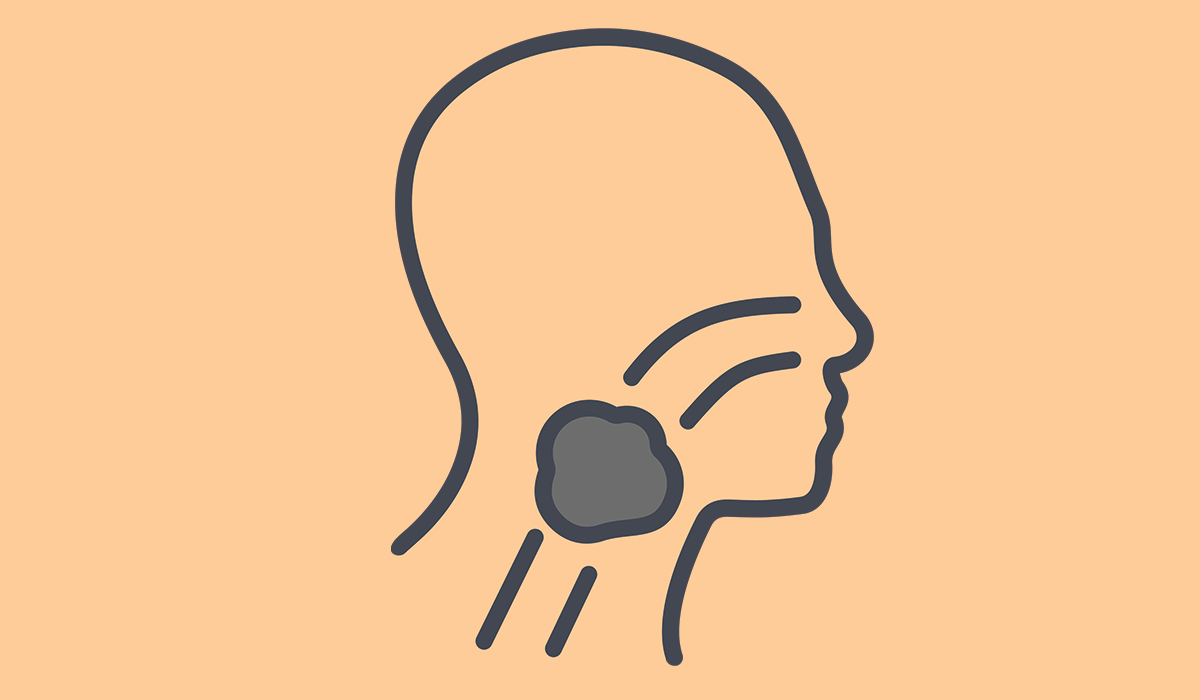
Throat Cancer
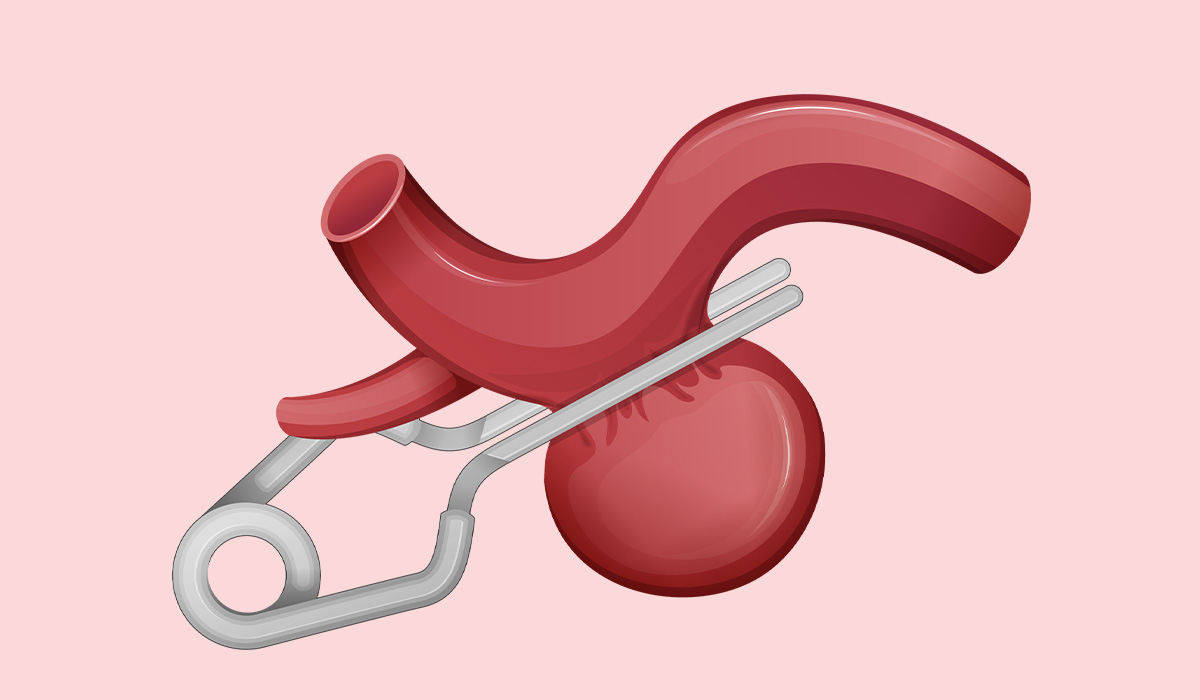
Aneurysm: What Is, Signs, Diagnosis, and Treatment
Squamous Cell Carcinoma: What Is, Symptoms, and Treatment
